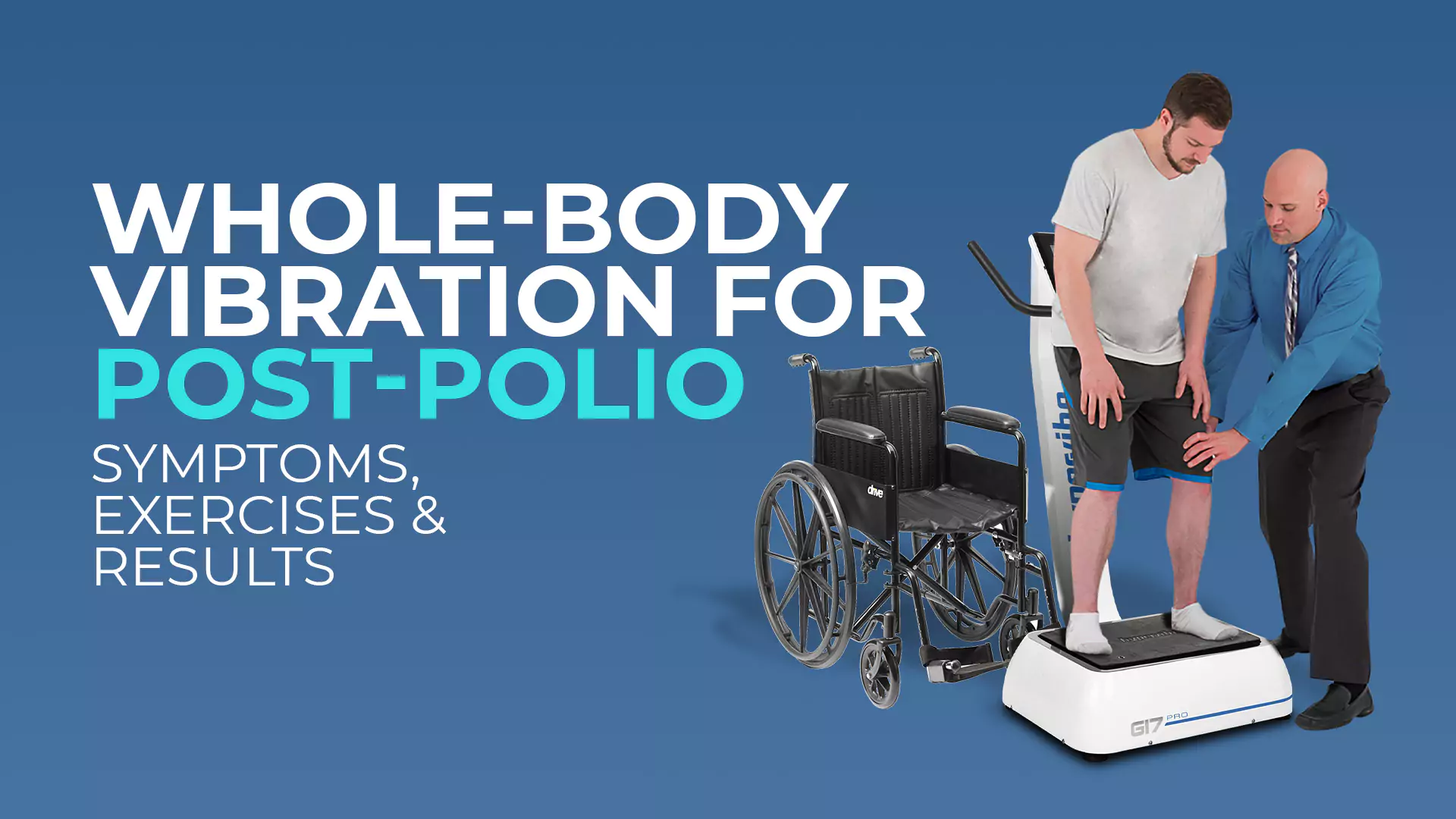
Post-Polio syndrome (PPS) is a condition that can appear decades after an initial Polio infection, bringing new challenges such as:
For many individuals, these symptoms can make traditional exercise difficult to sustain.
That’s where low-intensity approaches like Whole Body Vibration (WBV) can play a role.
Research and clinical experience suggest that WBV may support people with PPS by:
While WBV is not a cure, it offers a controlled, adaptable form of exercise that can fit the needs of individuals with Post-Polio.
With careful supervision and the right protocols, it helps to maintain strength, reduce discomfort, and improve overall quality of life.
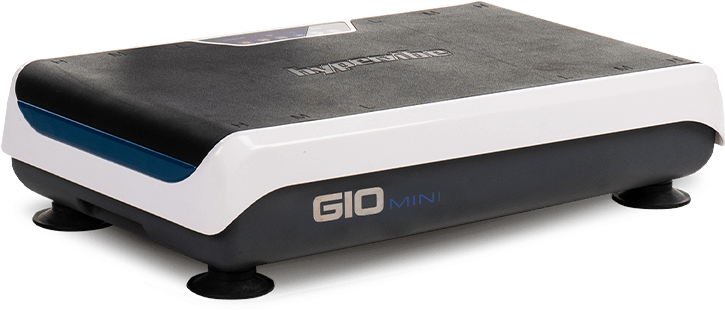




For many who have survived Polio, the disease is a memory of the past.
But decades later, for some, a new set of challenges may arise.
Post-Polio syndrome (PPS) is a late-onset neurological condition that affects people who had Polio, sometimes 15 to 40 years after their initial infection.
This condition isn’t a return of the virus but rather a delayed onset of progressive weakening of the nervous system.
While the exact prevalence is debated, studies suggest that 20–60% of previous Polio patients are affected by PPS in their lifetime.
But what does Polio do to the body to cause this?
During the original infection, the Polio virus destroys motor neurons in the spinal cord.
This forces the remaining neurons to “sprout” new nerve endings.
This is a form of compensation for the lost function, allowing a person to recover.
However, after many years of overuse, these overloaded “sprouted” neurons start failing.
That’s what’s known as neuronal sprouting collapse.
This leads to a loss of motor units and progressive muscle weakness and fatigue, which are Post-Polio syndrome symptoms.
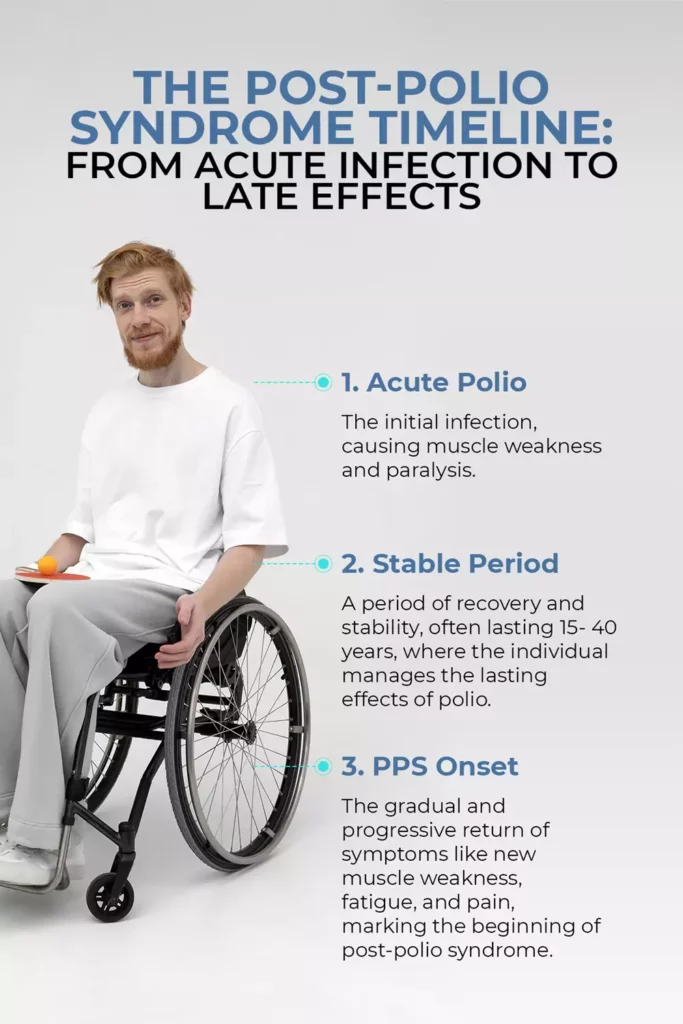
An infographic showing a man in a wheelchair with three labeled stages of post-polio syndrome acute polio, stable period, and PPS onset
Post-Polio syndrome can present with a wide range of debilitating symptoms, often affecting a person’s ability to live an active, independent life.
The most common symptoms, as outlined by the Mayo Clinic, include:
As mentioned, the Poliovirus attacks and destroys motor neurons in the spinal cord or brain stem, causing muscle weakness and paralysis:
The immediate impact of Polio is the destruction of anterior horn cells, which leads to asymmetric paralysis.
This causes one side of the body to be weaker than the other.
Now, even though many survivors regain their normal functioning, the foundational damage has already been done to these motor neurons.
And unfortunately, since the damage is permanent, the body is forced to compensate for years, setting the stage for the progressive symptoms that emerge decades later.
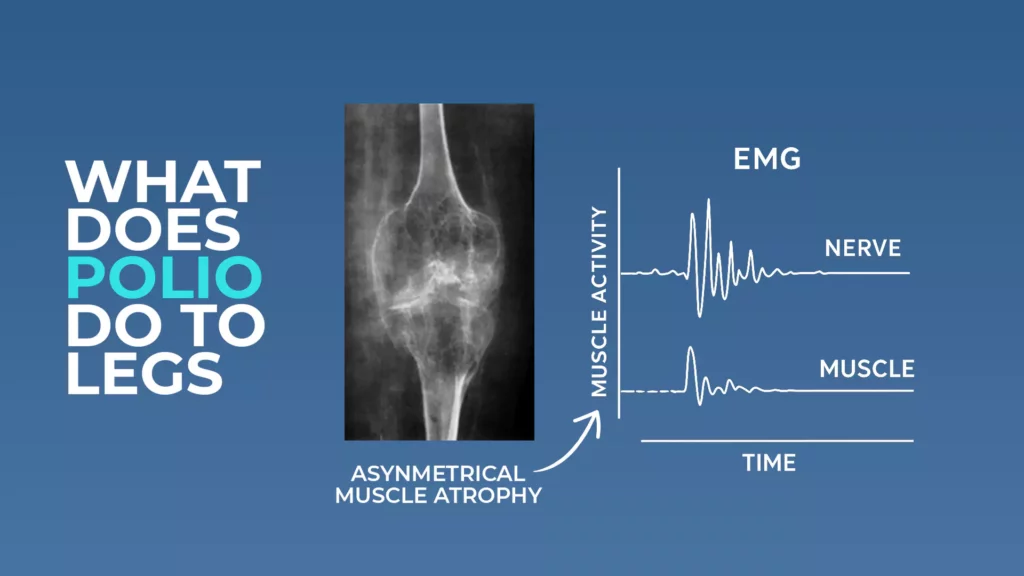
what does polio do to legs
The lasting effects of this nerve damage fundamentally alter a person’s musculoskeletal structure, causing other issues, such as:
It’s normal for Polio survivors to feel the need to push themselves to maintain strength.
However, too much weight load can result in further damage to joints, muscles, and bones, which are already compromised.
On the other hand, you can’t and shouldn’t rule out exercising.
Avoiding activity causes muscle disuse and deconditioning, making weakness worse.
And in addition, because your heart and lungs might not work as efficiently.
This is because as your aerobic capacity is 15–25% lower as a result of little or no exercise.
This is not an ideal level for your body to function as it should.
So what’s left to do? Here are the key rules for safe exercise in PPS:
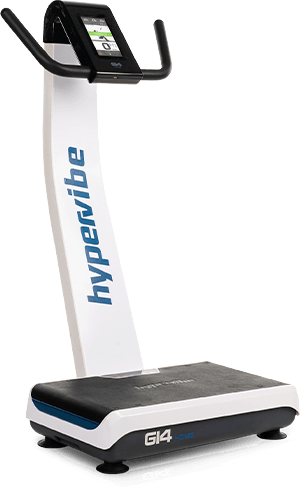




Whole Body Vibration (WBV) offers a unique solution when managing PPS.
Unlike conventional exercise, which can stress compromised areas of the body, WBV provides a supportive exercise regime that:
|
Study |
Participants |
Protocol |
Outcome |
|
15 survivors of Polio |
8 sessions for 8 weeks, using both low and high-intensity WBV platforms. |
The higher-intensity protocol improved walking speed and reduced pain. |
|
|
14 PPS patients |
WBV was included in home exercise programs for 8 weeks. |
WBV strengthened the knee on the more affected side and reduced daily fatigue. |
This kind of feedback improves your balance, stability, and control which are all essential for safe Post-Polio exercise.
Low-intensity aerobic exercise is excellent for heart health and endurance.
For PPS, a recumbent stationary bike can get the job done. Since your body weight is supported, pressure is taken off the weak joints and muscles.
Start slowly with 20-minute sessions, three times per week, while maintaining a comfortable pace.
These sessions encourage muscle strength and performance.
And yes, the key is to use low resistance and a low amount of resistance to prevent fatigue.
For starters, try elastic-band hip abduction, straight leg raises, or other low-resistance leg exercises, starting with just 5 reps for 2 sets.
And most importantly, ensure you can complete each rep with minimal pain or strain.
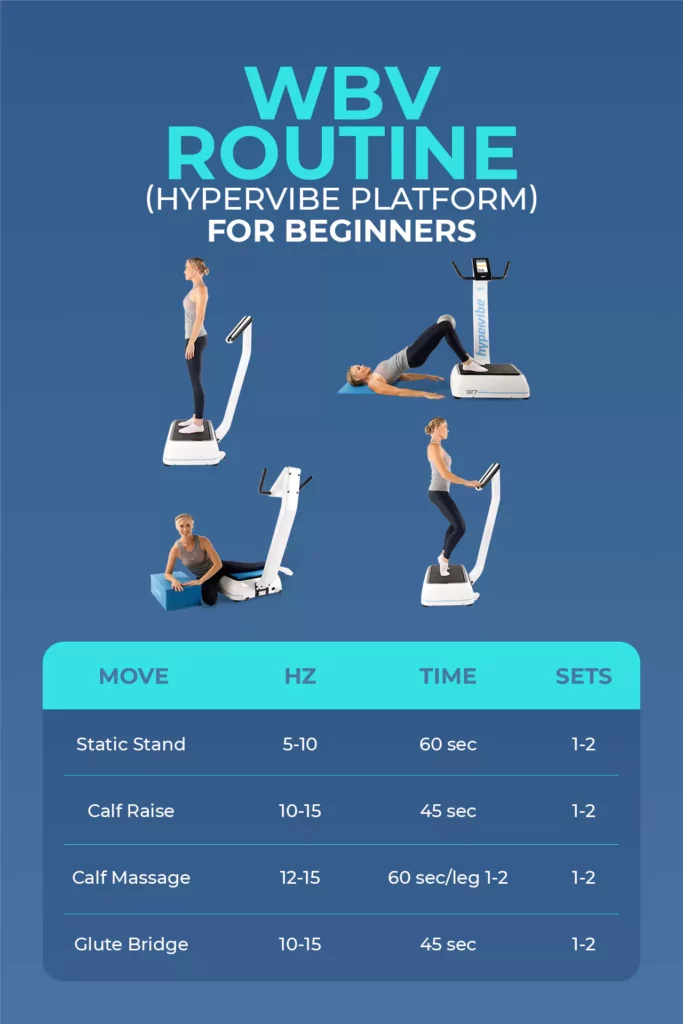
Whole Body Vibration routine for Post-Polio symptoms
Here’s a sample routine you can follow:
|
Move |
Hz |
Time |
Sets |
Cue |
Goal |
|
Static Stand |
5–10 |
60 sec |
1-2 |
Stand on the platform, and ensure not to lock your knees (keep a slight bend). |
Balance and circulation improvement. |
|
Calf Raise |
10–15 |
45 sec |
1-2 |
Rise and fall on your toes slowly. |
Strengthens your legs. |
|
Calf Massage |
12–15 |
60 sec/leg |
1-2 |
Rest your calves on the machine while lying comfortably on your back. |
Helps release fascial tension and improves flexibility. |
|
Glute Bridge |
10–15 |
45 sec |
1-2 |
Lie down on your back. Have your feet on the platform, and slowly lift your hips. |
Engages your core while strengthening your glutes. |
If you want to be consistent with your WBV routine, here’s a structured 8-week Post-Polio exercise routine you can follow:
|
Week |
Frequency (sessions/wk) |
WBV Minutes (per session) |
RPE (1–10 scale) |
|
1–2 |
2×/wk |
10 |
2–3 |
|
3–4 |
3×/wk |
12 |
3–4 |
|
5–6 |
3-4×/wk |
15 |
4 |
|
7–8 |
3-4×/wk |
20 |
4–5 |
Remember: Always listen to your body and adjust as needed to avoid discomfort, overuse, or prolonged fatigue.
The goal is consistent, low-intensity engagement.
Rest-Day Rule: Rest at least 24 hours between workouts when starting out to let your muscles recharge.
Yes, Whole Body Vibration is safe and a beneficial form of PPS exercise.
However, it’s essential for you to:
Additionally, there are a few conditions that require medical guidance.
This category includes people with:
If you feel dizzy or worn out for more than 30 minutes or notice more muscle pain after a session, stop and speak to your doctor.
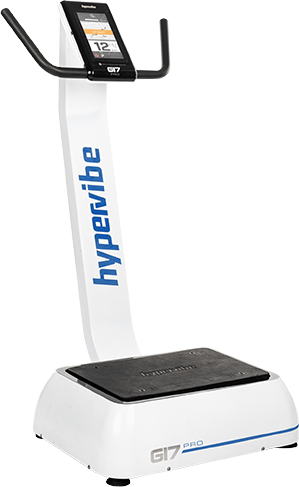




The primary rule for Post-Polio exercise is to avoid anything that causes muscle pain or prolonged fatigue.
High-intensity, high-impact activities like running, heavy weightlifting, or exercising to exhaustion can permanently damage already compromised areas of the body and should be avoided.
Additionally, any form of exercise that causes new joint pain should also be avoided.
When dealing with PPS, all your focus should be on activities that provide therapeutic benefits while also enabling you to safely build muscle strength.
When performed correctly, WBV is unlikely to worsen joint pain.
If you keep the settings low and go slow, the vibration promotes circulation and releases muscular tension around the joints.
However, if you have existing joint damage from long-term Polio effects or a condition like early osteoarthritis, always start with a very low setting and consult your medical provider.
Yes, but safely.
Because Polio reduces the total number of motor units, building significant muscle mass is challenging.
However, with consistent and safe exercises for Post-Polio syndrome, you can improve muscle strength and function.
The key is to stimulate the muscle consistently. This manages the weakness caused by PPS and the risk of overuse.
Consistency is the key. Start with 1-2 sessions per week and build to 3-4 sessions.
Most importantly, listen to your body and schedule rest days.
Never exercise to the point of exhaustion, and if you experience extreme muscle soreness or fatigue that lasts more than 30 minutes after your workout, you may need to reduce your frequency or intensity.
Living with Post-Polio syndrome brings unique challenges, especially when it comes to exercise.
The evidence shows that low-intensity, carefully structured exercise offers the safest way forward.
Whole Body Vibration (WBV), in particular, enables muscle activation, improved circulation, and mobility/flexibility support without the impact or overexertion that traditional exercise may cause.
The most effective approach is a personalized, professionally guided plan that emphasizes consistency, moderation, and respect for your body’s limits.
While PPS cannot be reversed, symptoms can be managed, and mobility and independence can be supported.
With the right strategy, many individuals find that WBV becomes a safe and practical tool to maintain activity and reduce discomfort.
Download our buyer’s guide or get yourself one of Hypervibe’s platforms to start exercising.

Here’s how we use a vibration plate for weight loss...
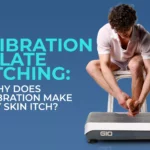
Many people, especially beginners, notice an itchy or tingling “pins-and-needles”...
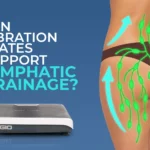
Yes, Vibration Plates or Whole Body Vibration (WBV) platforms, promote...

The lymphatic system, also called the lymphoid system, is an...
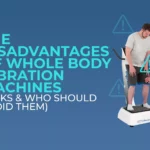
Are vibration machines bad for you? Yes, if used incorrectly....